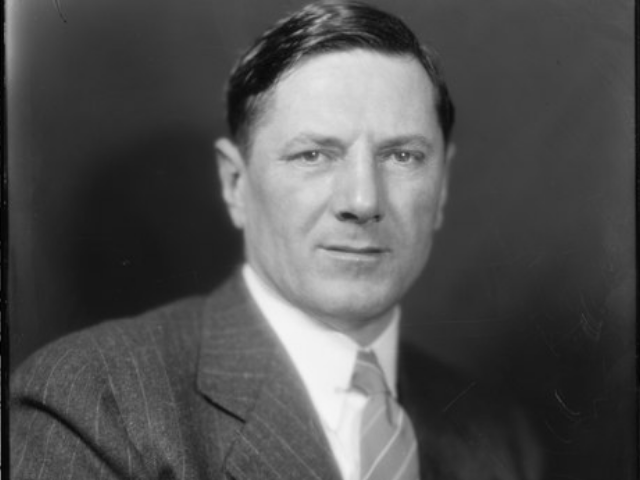
Govenor Burnet Maybank. 1905. Photographed by Harris & Ewing. Library of Congress Prints and Photographs Division
(1899-1954) Born in Charleston, Maybank was the son of Joseph Maybank and Harriett Rhett. He attended Porter Military Academy and earned an A.B. degree from the College of Charleston in 1919. He became a successful Charleston cotton broker after learning the business in the office of his uncle, John Frampton Maybank. In November 1923 Maybank married Elizabeth de Rousset Myers. They had three children. After her death in 1947, he married Mary Randolph Piezer on December 10, 1948. The second marriage produced no children.
In 1931, Maybank was asked to run for mayor. Supporters believed him capable of ending the bitter factionalism in city politics and installing an administration equipped to deal with Charleston’s worsening financial crisis. Maybank won and served from 1931 to 1938. As mayor, Maybank revamped the city budget and retired much of the accumulated debt. He took advantage of New Deal programs to provide work relief for the unemployed and to improve his community. With federal grants, Maybank repaired public buildings, constructed a gymnasium at the College of Charleston, restored Dock Street Theatre, and added a municipal yacht basin, public swimming pools, a garbage incinerator, and low-income housing. Maybank also chaired the South Carolina Public Service Authority, a public corporation that built the largest New Deal undertaking in the state: the Santee Cooper hydroelectric project.
Maybank ran successfully for governor in 1938 and served until 1941, Maybank found his tenure as governor a frustrating interlude between his service as mayor and his career in the U.S. Senate. His requests to restrict the governor’s pardoning power, to create a state police force, to establish a merit system for state employment, and to limit the financial independence of the state highway commission were ignored or defeated by the General Assembly.
Maybank entered the US Senate in 1941, where he exercised a quiet but potent influence in national affairs. He gained the chairmanship of the Senate Banking Committee and helped shape the post–World War II economy. He championed the development of federal housing policy, provided a solid vote for defense appropriations in the early cold-war era, and supported Democratic presidents on most issues except the repeal of the Taft-Hartley law.
After his reelection in 1942 and again in 1948, Maybank had no opposition in the primary election of 1954 and planned on returning to Washington after the legislative recess. However, Maybank died of a heart attack on September 1, 1954.


